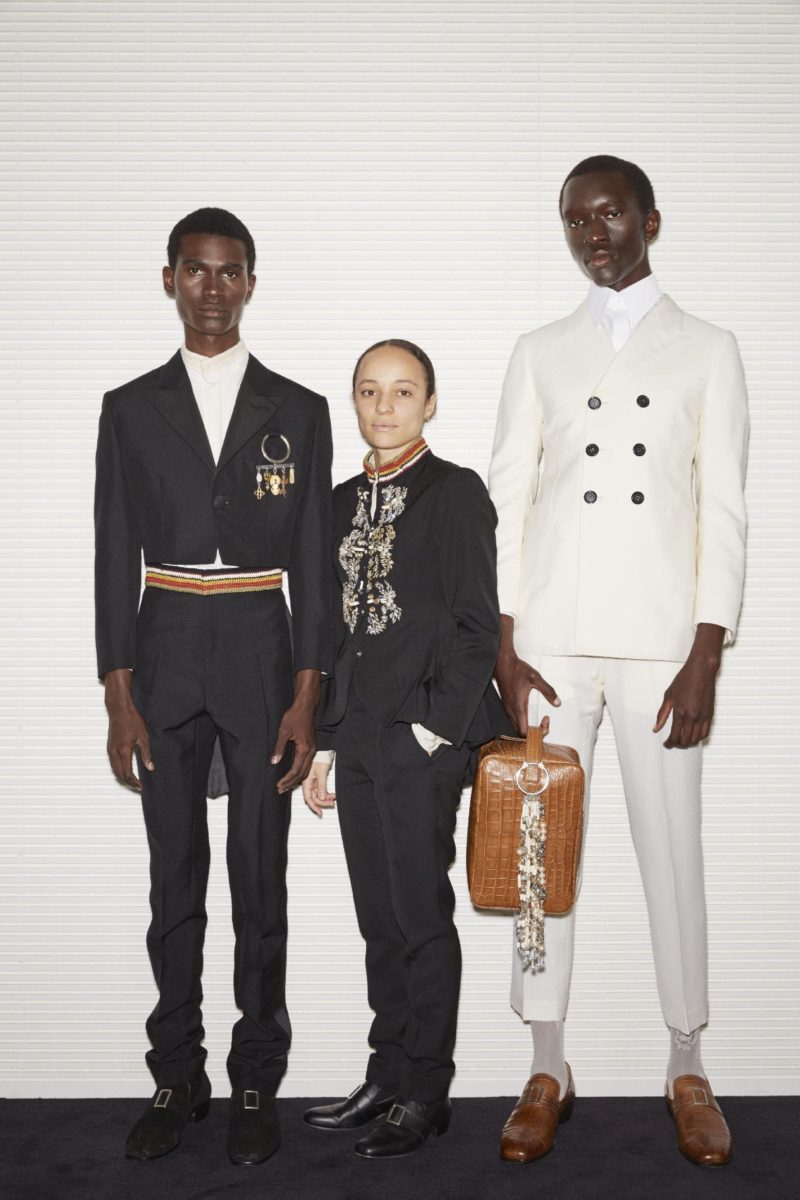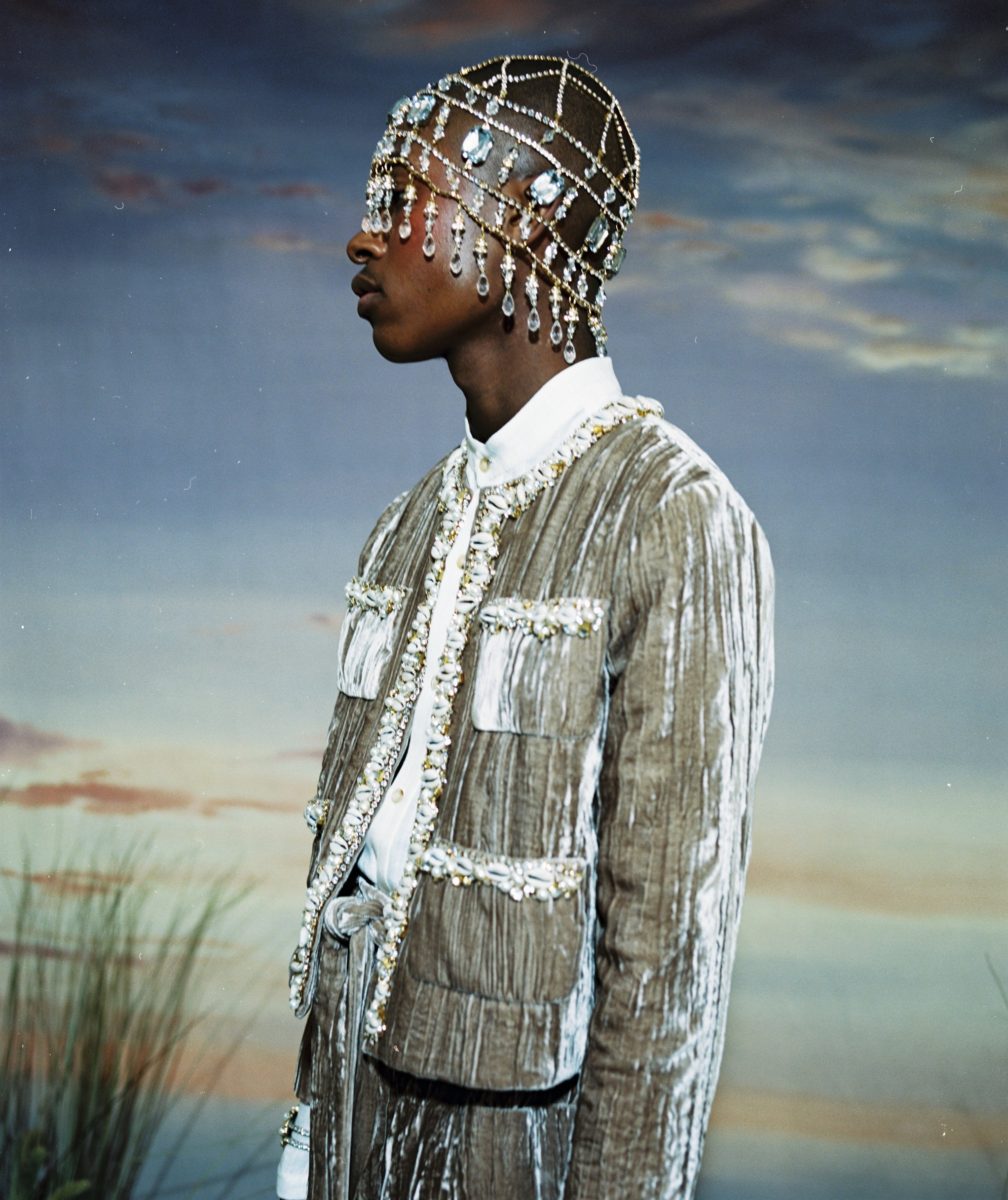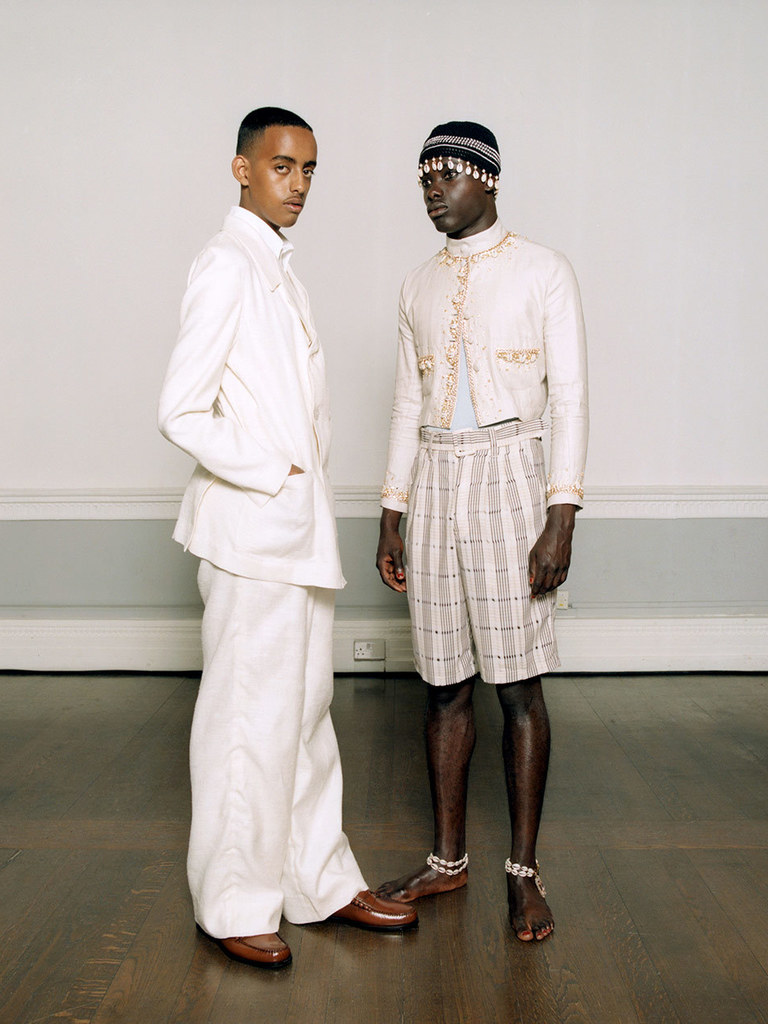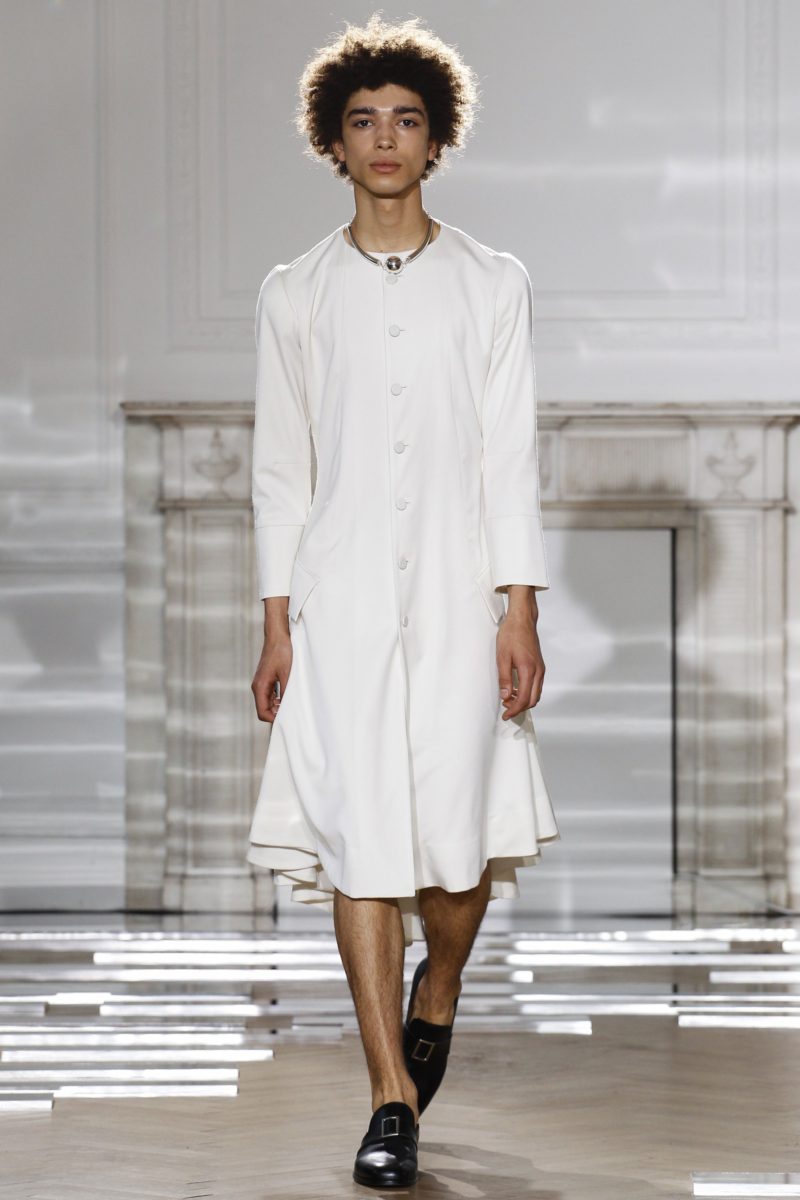Grace Wales Bonner: Fashion Designer
By Something CuratedGraduating from the BA Menswear programme at Central Saint Martins in 2014, Grace Wales Bonner won the L’Oreal Professionnel Talent Award for her graduate collection. Exploring intersections between diverse cultures, Wales Bonner’s influences span blaxploitation films, Coco Chanel, and traditional African craft techniques, amongst an array of references. She has become quickly recognised for her elegant tailoring, 70’s silhouettes, decadent fabrics and ornate embroidery. The British-Jamaican designer, who has experienced meteoric success over the past two years, gained attention for her gender-fluid collections that, rich in narrative, explore ideas surrounding black male identity.

Shortly after completing her studies, Wales Bonner was invited by Lulu Kennedy to show her AW15 collection with Fashion East, presenting her work during London Collections: Men. Notably, her LCM debut, entitled Ebonics, was also presented at the V&A’s Fashion in Motion programme. The same year, the recent graduate went onto win the British Fashion Council’s Emerging Menswear Designer award. Recently, following critical acclaim, the 25-year-old creative was announced the winner of the 2016 LVMH Prize. The decision was made by a discerning panel of judges, comprising designers Jonathan Anderson, Nicolas Ghesquière, Marc Jacobs, Karl Lagerfeld, Humberto Leon, Carol Lim, Phoebe Philo and Riccardo Tisci. Wales Bonner received a €300,000 grant and a year-long mentorship from executives at the French luxury conglomerate.

Wales Bonner, who is prominently a menswear designer, has recently started adapting a selection of pieces for women. Seminal to her work is what she calls “hybridity,” an ambition to allow distinctive cultures to coexist on their own terms in design, evident in her latest collection. She professes, “I try to make my images as un-stereotypical as possible,” and certainly her designs are indisputably original. Wales Bonner’s collections are fraught with cultural references, partly inspired by the designer’s mixed race heritage, her sense of black British identity, as well as, more specifically, representations of the black male throughout history. Her shows to date have been almost entirely made up of black, Asian and mixed race models, a feat in itself in the fashion industry. The young designer is interested in pushing black male identity in fashion beyond the ubiquitous streetwear we have become used to seeing, investigating notions of public perception, sexuality and gender.

For her SS17 offering, her first stand-alone presentation outside the Fashion East umbrella, titled Ezekiel, Wales Bonner was inspired by Haile Selassie, Emperor of Ethiopia. Worlds were bridged in Selassie’s assimilation of formal Western dress and his own ceremonial traditions, inspiring many of Wales Bonner’s designs. The collection included smooth shouldered jackets with voluminous sleeves and neatly pinched waists combined with ruffles, crochet collars and glittering beadwork. Her nuanced integration of varied cultural vocabularies, which has been a signature from the start, remains critical to her work. The designer recently spent a month at Thread, an artists’ residency in Senegal run by the Albers Foundation, where she researched weaving, textiles and crafts. We look forward to seeing how these new influences, as well as the significant support from LVMH, will impact Wales Bonner’s output next season.

On her plans after winning the LVMH Prize:
“I first want to focus on growing the team and to look after the people that have been working with me out of love. But I don’t want to change my path. I had a very clear view of what I do before this, and that’s not going to change. I will continue to show in London.” – The Business of Fashion, 2016
On her label’s ethos:
“I think of my collections as a whole – I wouldn’t necessarily break them up into men’s and women’s … I’m more interested in breaking down the conventional way things happen, I’m trying to disturb the framework.” – Elle, 2016
On craft:
“With my work, it’s more about mixing things and allowing couture techniques and craft techniques to stand with the same integrity. It’s about coming at it from a different point of view.” – The Financial Times, 2016
On moving into womenswear:
“My course was menswear. Projecting onto a man gave me space to think about the men in my family and their history. Now, knowing how to do that, I can do womenswear. It’s exciting to have women wearing my clothes; it gives it a different context.” – Matches, 2016